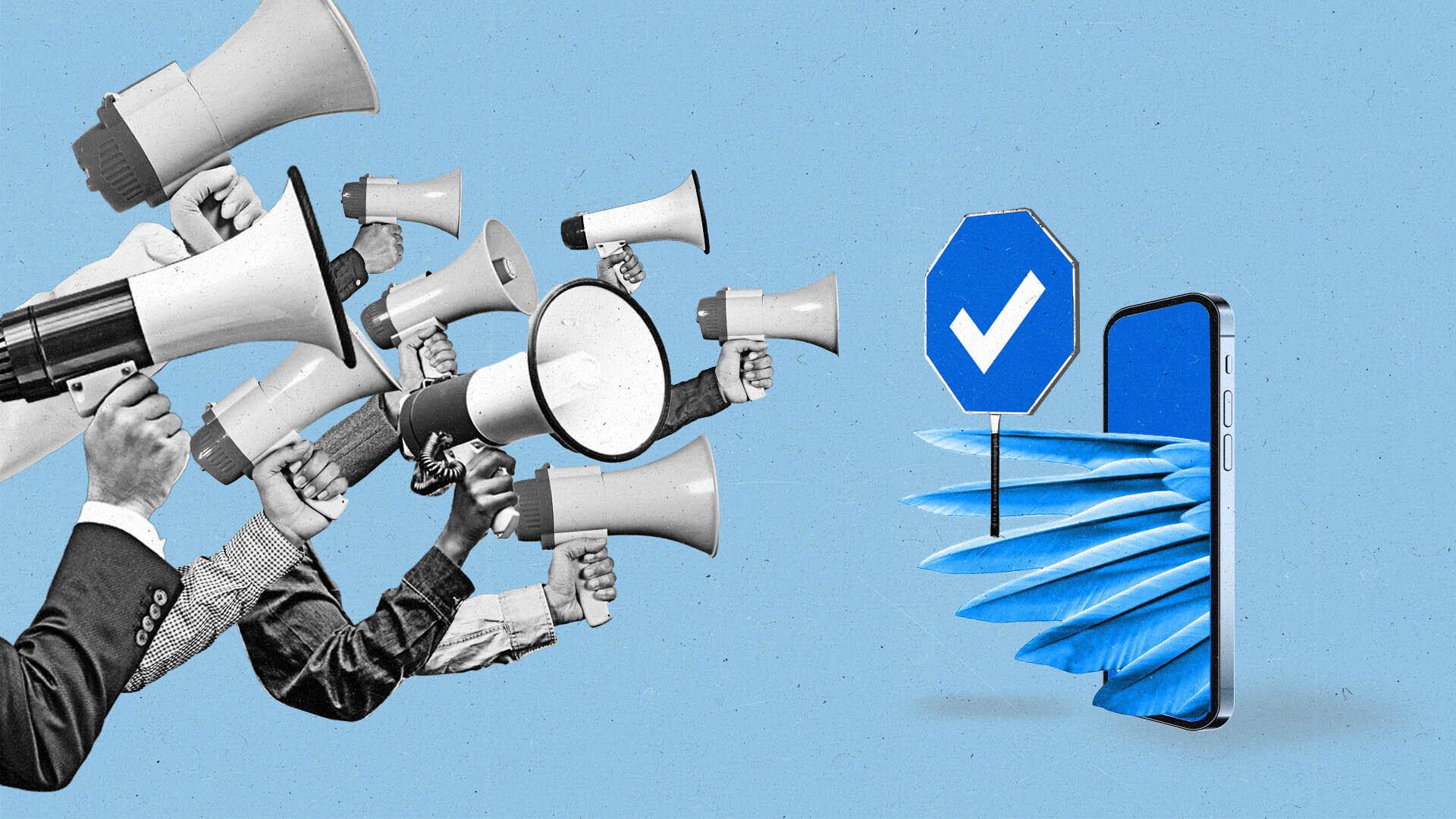Advertisers and brands sound off on Twitter’s new verification rules

Goodbye comforting blue checkmarks of authentication. On Thursday, Twitter unceremoniously killed its verified checkmarks that notable account holders — everyone from brands to celebrities and reporters — have clung to on the platform since its introduction in 2009. To add salt to the wound, on Friday, Twitter advertisers woke up to emails stating that they must sign up for Twitter Blue or Verification for Organizations in order to continue advertising on the platform.
This now means brands, publishers, and influencers will have to pay Twitter $8 a month for a blue tick, or $1,000 a month for its Verification for Organizations offering (a gold check), and Twitter CEO Elon Musk stated that it is only placing verified accounts in “For You” recommendations. Brands that are already spending $1,000 a month will automatically be given gold checkmarks. It was also previously reported that Twitter is giving its top 500 advertisers that pay the most for ads on its platform a free pass. Meanwhile, Microsoft is dropping Twitter from its advertising platform after it announced fees to use its API start at $42,000 a month.
Matt Navarra, social media consultant and industry analyst, has been updating Twitter with the latest news around the changes, and claims that Twitter has been emailing advertisers “saying it screwed up today by removing gold checkmarks from a lot of accounts in error.”
Naturally, the move to remove checkmarks without payment makes it more difficult for smaller brands and influencers to afford to advertise on the platform. Will small businesses be willing to give Twitter $12,000 more a year in order to advertise on a platform with arguably less brand safely elements since profiles are not verified unless paid for. Already, Musk recently said that Twitter lost 50 percent of its ad revenue since last October.
It also has far-reaching implications, even outside of ad campaigns. When it comes to journalism, reporters and publishers will face an uphill battle in verifying sources for articles when reporting using social media posts. It will also make it harder for brands to spot potential partners with influencers, especially with the amount of copycat accounts that exist. Even the City of New York felt the need to announce its authenticity.
Well, the one-two punch didn’t go over too well on the platform itself where advertisers, journalists, and celebrities sounded off on not only losing out on the legacy blue marks of authentication, but needing to pay the platform more for advertising, further giving the walled garden more power over their spend.
Oh dear Lord, @elonmusk you have lost the plot. Please, for the sake of the continued vitality and viability of the platform, rescind this inane policy immediately. No self-respecting large advertiser will pay for verification on principle and no small advertiser can afford to! https://t.co/vk2zAu5Hqt
— Lou Paskalis :ukraine::usa: (@LouPas) April 21, 2023
I’m calling it. Twitter isn’t dying. It’s dead. Today. 4/20/23 was the nail in the coffin. The business was almost entirely advertising, now dropping like a rock along with the value of the company. Only need four more tweets to kill it. 1/5
— Jason Kint (@jason_kint) April 21, 2023
I was discussing modest $500 Twitter ad campaign with a client that had never used the platform. There's absolutely no way they're going to pay a minimum of $1K/month for the privilege of advertising on a third-rate platform.
— Chris Herbert (@chrisgherbert) April 21, 2023
I think it's strange to add more steps / friction when someone is trying to spend money with your business that is losing money
— dennis hegstad (@dennishegstad) April 21, 2023
Whelp, I don’t think our clients are going to go for that. We’ll likely divert Twitter budgets to IG or LI for most of those currently running ads on this hell hole. :shrug:♂️
— Fuzz Martin (@FuzzMartin) April 21, 2023
Twitter depends on people being willing to give free content. Twitter can want us to pay for the right to give them free content, but that's just silly.
— David M. Perry (@Lollardfish) April 21, 2023
So by revoking my blue check mark because I wouldn’t pay some arbitrary fee, someone can just be me and say a bunch of bullshit. Does that mean Twitter and @elonmusk are liable for defamation or identity theft or fraud?
— Alyssa Milano (@Alyssa_Milano) April 20, 2023
Ok everyone. Twitter has removed my verification. I will no longer be posting on this app. Anyone who posts as me is an imposter. I wish you all well.
— jason alexander (@IJasonAlexander) April 21, 2023
At least some are having their fun:
we are DEFINITELY the real OREO account
— OREO Cookie (@Oreo) April 21, 2023
blue dots > blue checks
— Peloton (@onepeloton) April 20, 2023
— Steak-umm (@steak_umm) April 19, 2023
This is now officially the unofficial MoonPie account please direct all serious inquiries to someone else
— MoonPie (@MoonPie) April 20, 2023
Musk doesn’t seem to be taking concerns very seriously. In fact, he said he’s paying for some celebrities to have Twitter Blue subscriptions himself, including for LeBron James, Stephen King and William Shatner.
We’ve started a “save-a-celebrity fund” to pay their $8. We take this matter very seriously.
— Elon Musk (@elonmusk) April 21, 2023
Subscribe to The Current
Subscribe to The Current